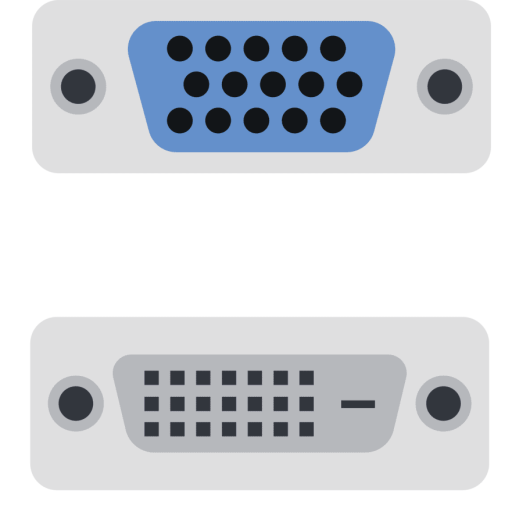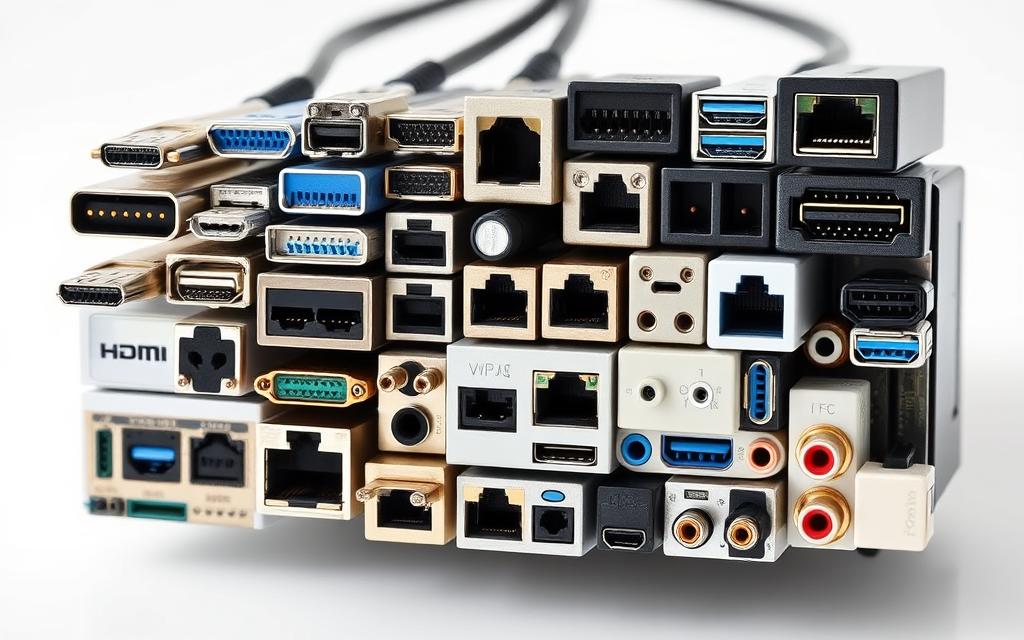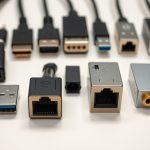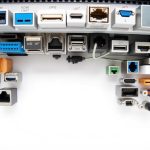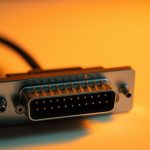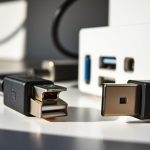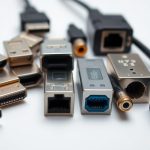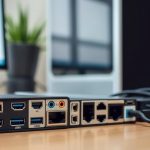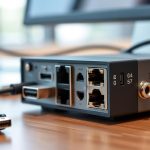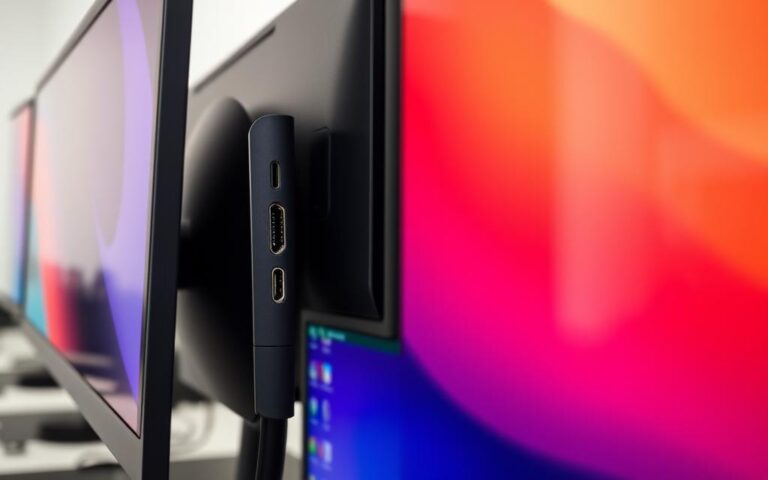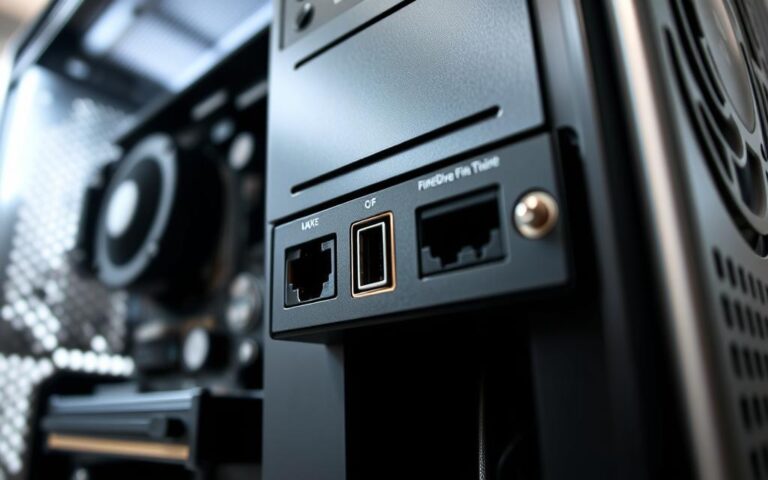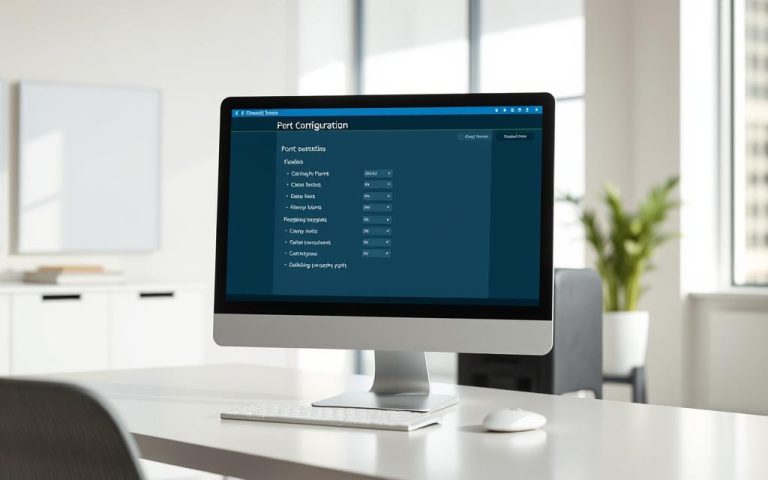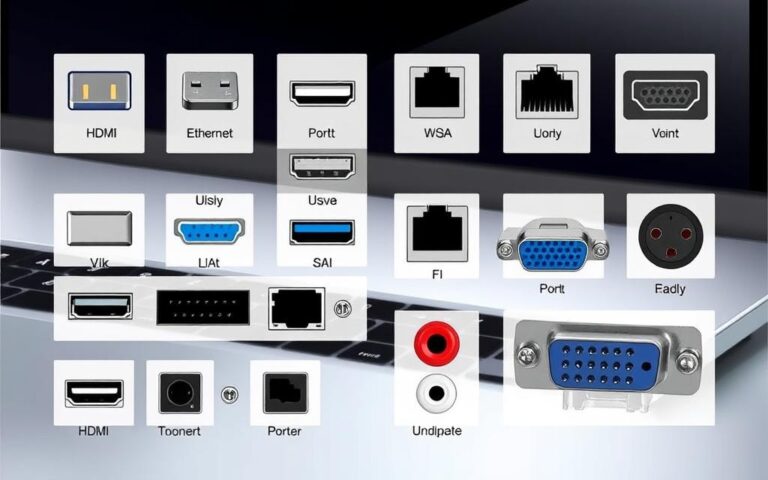Ports of a PC: What They Are and How They Work
Computer ports are physical docking points on a computer that enable users to connect various external devices, facilitating data transfer and communication. A port acts as an interface between the computer and devices such as a mouse, printer, or modem.
The significance of ports in modern computing cannot be overstated. They have evolved over time to meet the changing demands of technology and user requirements. Understanding computer ports is essential for anyone working with computers, as they determine the connectivity options and compatibility with peripheral devices.
As technology advances, the role of ports continues to be vital. They serve as essential interfaces between computers and external devices, enabling users to expand their computer’s capabilities and enhance their overall computing experience.
Understanding PC Ports: The Gateway to Connectivity
Understanding PC ports is essential for grasping how computers interact with external devices. PC ports serve as the primary gateway for connectivity, acting as physical interfaces that allow data to flow between the computer and external peripherals.
Definition and Basic Function
The basic function of ports involves establishing standardised connections that enable communication protocols between the computer’s internal components and external devices. This facilitates the transfer of data between the computer and peripherals like keyboards, mice, and monitors.
- PC ports enable communication between the computer and external devices.
- Standardised connections facilitate data transfer.
Internal vs. External Ports
Ports are categorised into two main types: internal and external. Internal ports connect directly to the motherboard, facilitating communication with components housed within the computer case, such as hard drives and optical drives. External ports, on the other hand, are visible on the computer’s exterior and provide connection points for peripherals.
- Internal ports connect to the motherboard.
- External ports connect to peripherals like printers and flash drives.
The Evolution of Computer Ports
The evolution of computer ports has been a significant aspect of computing history. As technology has advanced, the need for faster, more versatile connections has driven innovation in port design.
From Legacy Ports to Modern Connections
Legacy ports such as serial and parallel connections were once the norm. Serial ports transmitted data sequentially, one bit at a time, using a single cable to transmit 8 bits, resulting in slower communication. In contrast, parallel ports could send or receive 8 bits or 1 byte at a time, improving data transfer rates. However, these legacy ports have largely been replaced by more modern interfaces.
The introduction of USB revolutionised connectivity by providing a standardised interface capable of supporting multiple device types with improved data transfer rates. Modern ports like Thunderbolt and USB-C have further enhanced connectivity, combining power delivery, data transfer, and video output in single connections.
| Port Type | Data Transfer Rate | Primary Use |
|---|---|---|
| Serial Port | Slow (1 bit at a time) | Legacy device connections |
| Parallel Port | Faster (8 bits at a time) | Legacy printer connections |
| USB | Variable (dependent on version) | General device connectivity |
| Thunderbolt | High-speed | High-speed data transfer and video output |
The Impact of Technological Advancements
Technological advancements have driven the development of high-speed ports, enabling faster data transfer and improved connectivity. The convergence of different connection standards has also simplified the process of connecting devices.
The evolution of ports reflects broader trends in computing, including miniaturisation and increased data throughput requirements. As technology continues to advance, we can expect further innovations in port design and functionality.
How PC Ports Actually Work
At the heart of PC ports lies a sophisticated system that governs data transfer and communication between devices. PC ports are not just physical connectors but are crucial for enabling the exchange of information.
Data Transfer Principles
PC ports function through established data transfer principles that govern how information moves between the computer and connected devices. The fundamental operation involves converting digital signals from the computer into appropriate formats that can be transmitted through physical connections. This process allows for the efficient transfer of data.
Communication Protocols
Communication protocols specific to each port type establish rules for data packaging, transmission speeds, error checking, and handshaking between devices. Modern ports implement sophisticated mechanisms for bidirectional data flow, allowing simultaneous sending and receiving of information at high speeds. Understanding these working principles helps users select appropriate ports for specific applications based on bandwidth requirements and compatibility needs.
USB Ports: The Universal Standard
USB ports are the backbone of modern computer connectivity, offering a versatile and widely adopted standard for connecting a wide range of peripherals and devices. The Universal Serial Bus (USB) has simplified the process of connecting accessories such as external hard drives, printers, mice, and keyboards to computers.
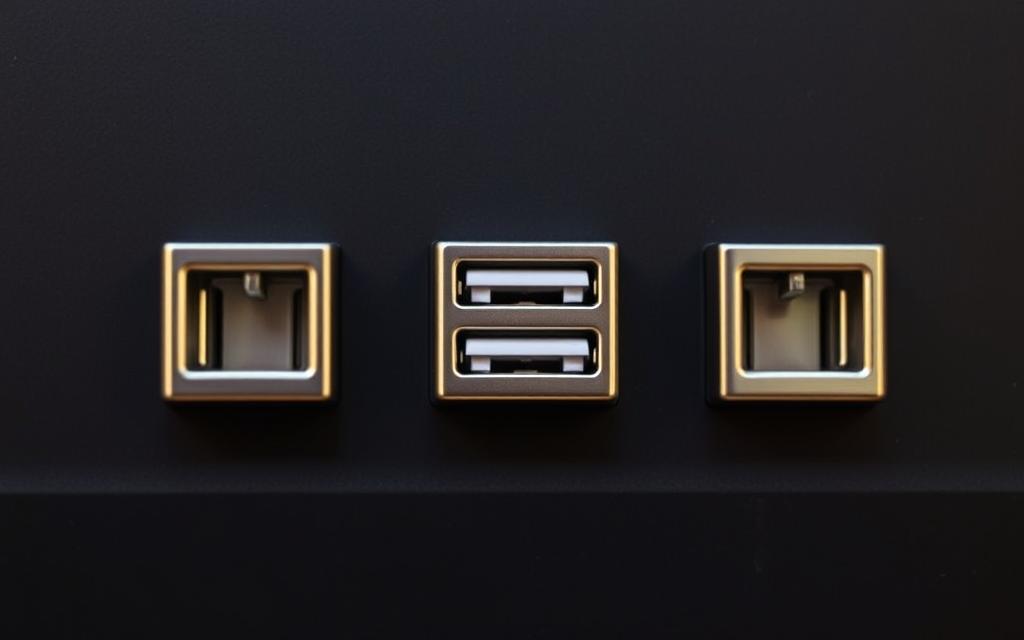
Types of USB Ports
The USB family includes several connector types, each designed for specific applications. USB-A is the traditional rectangular connector commonly used for computers and laptops. USB-B is typically used for printers, scanners, and other peripherals. The newer USB-C represents a significant advancement, offering a reversible design and higher speeds. Other variants include micro-USB, commonly used for mobile devices.
- USB-A: Traditional rectangular connector
- USB-B: Used for printers and scanners
- USB-C: Reversible, high-speed connector
USB Versions and Speed Capabilities
USB technology has evolved significantly over the years, with various versions offering improved data transfer rates. USB1.0 started with modest speeds of 12 Mbps, while USB2.0 marked a significant improvement. Later versions, such as USB3.0 and beyond, have brought substantial speed increases, with USB3.2 Gen2x2 capable of achieving data transfer rates of up to 20 Gbps.
- USB1.0: 12 Mbps
- USB2.0: Significant improvement in data transfer rate
- USB3.2 Gen2x2: Up to 20 Gbps
Display Ports of a PC
The variety of display ports on a PC can be overwhelming, but understanding their functions is key to optimal connectivity. Display ports are specialised connections designed to transmit video and audio signals from a computer to display devices such as monitors and projectors.
VGA, DVI, and HDMI
VGA (Video Graphics Array) is an older analogue interface that connects a monitor to a computer’s video card. Although largely superseded, it remains in limited use. DVI (Digital Visual Interface) improved upon VGA by offering digital signal transmission, reducing signal degradation. HDMI (High-Definition Multimedia Interface) has become the standard for consumer electronics and computer displays, combining high-definition video and multi-channel audio in a single cable.
DisplayPort and Thunderbolt
DisplayPort and Thunderbolt represent the cutting edge of display technology, offering extremely high bandwidth for 4K+ resolutions and multiple monitor support. They enable the connection of multiple displays to a single port, enhancing productivity and flexibility. These modern interfaces are designed to meet the demands of high-resolution displays and fast data transfer.
Network and Internet Connectivity Ports
To access the internet and local networks, computers rely on specific ports designed for connectivity. These ports serve as the gateway between computers and the broader internet or local networks.
Ethernet Ports
An Ethernet port, also known as an RJ45 socket, is used to connect computers to routers, switches, and modems, enabling internet access. It is a crucial component for establishing wired network connections. Ethernet ports support various speeds, ranging from 100 Mbps to 1000 Mbps (Gigabit Ethernet) and even 10 Gigabit Ethernet in high-performance systems.
| Ethernet Speed | Bandwidth | Common Use |
|---|---|---|
| 100 Mbps | Standard | Home networks |
| 1000 Mbps | Gigabit | Business networks |
| 10 Gigabit | High-speed | Data centers |
Modem Ports
Modem ports have evolved significantly, from traditional telephone-based connections to modern cable and fibre interfaces that deliver broadband internet access. These ports are essential for connecting to internet service providers (ISPs) and accessing the internet. Modern modem ports support high-speed data transfer, enabling fast and reliable internet connectivity.
Audio and Multimedia Ports
To enable audio functionality, PCs are equipped with a variety of ports that facilitate the connection of sound input and output devices, thereby enhancing the overall multimedia experience.
Audio Jack Configurations
The standard 3.5mm audio jack remains the most common audio connection, with colour-coded ports typically distinguishing between different functions. For instance, pink ports are usually designated for microphone inputs, while green ports are for speaker or headphone outputs. Modern computers often feature combined audio jacks that support both microphone and headphone functionality through a single port.
Microphone and Speaker Connections
Microphones and speakers are connected to the computer’s sound card via sockets. For high-quality audio transmission, digital connections like S/PDIF are utilised, avoiding signal degradation. Advanced configurations may include multiple ports for surround sound systems, with dedicated connections for various speakers. For more information on audio ports, visit this guide.
Legacy Ports: Understanding Older Connections
As technology advances, older computer ports have become relics of the past, but understanding their functions is crucial for appreciating modern connectivity. Legacy ports were once the standard for connecting various devices to computers.
Serial and Parallel Ports
Serial ports, also known as COM ports, transmitted data one bit at a time through 9-pin or 25-pin connectors. They were commonly used for connecting modems, mice, and early printers. Parallel ports, on the other hand, sent multiple bits simultaneously, making them faster for printer connections. Both have been largely replaced by USB due to its higher speed and convenience.
| Port Type | Data Transfer Method | Common Uses |
|---|---|---|
| Serial Port | One bit at a time | Modems, mice, early printers |
| Parallel Port | Multiple bits simultaneously | Printers, external storage devices |
PS/2 and FireWire Ports
PS/2 ports were used for connecting keyboards and mice, featuring small, round 6-pin connectors that were often colour-coded. FireWire, or IEEE 1394, was a high-speed alternative to USB, popular for video cameras and external hard drives, offering speeds of 400-800 Mbps. Although largely replaced by newer technologies, they remain significant in the history of computer connectivity.
Specialised Ports for Specific Functions
Beyond standard connectivity options, computers often feature specialised ports designed for specific functions. These ports cater to particular computing needs, offering dedicated interfaces for various devices or functions.
Card Reader Slots
Card reader slots are a common feature on many computers, including desktops and laptops. These slots allow users to insert memory cards, such as SD cards, directly into the computer, eliminating the need for external card readers. This functionality is particularly useful for individuals who work with digital cameras or other portable devices that use memory cards for storage.
Expansion Slots and Docking Ports
Expansion slots, such as PCIe, enable users to add functionality to their desktop computers by installing additional cards for graphics, sound, networking, or storage. On the other hand, docking ports on laptops allow users to connect to docking stations, which expand connectivity options and facilitate quick transitions between mobile and desktop-like setups.
| Port Type | Functionality | Common Use |
|---|---|---|
| Card Reader Slots | Direct access to memory cards | Digital cameras, portable devices |
| Expansion Slots (PCIe) | Adds functionality to desktop computers | Graphics cards, sound cards, networking |
| Docking Ports | Connects laptops to docking stations | Expands connectivity, simplifies transitions |
Troubleshooting Common Port Issues
Effective troubleshooting of PC ports is essential for resolving connectivity problems. Ports are a crucial component of a computer system, enabling the connection of various devices. When these ports malfunction, it can lead to a range of issues.
Identifying Connection Problems
Connection problems typically stem from physical damage to ports or cables, driver conflicts, or incompatibility between devices and port specifications. To identify the issue, users should check physical connections, test alternative ports or devices, and examine system device managers. For instance, a faulty USB cable or a damaged USB port on a laptop can cause connection issues.
Solutions for Port Malfunctions
Solutions for port malfunctions range from simple fixes like restarting devices and updating drivers to more advanced approaches like BIOS updates or hardware replacements when physical damage is present. For example, updating the USB driver or replacing a faulty USB port can resolve connectivity issues. Additionally, ensuring that devices are properly configured and recognised by the computer is crucial.
| Issue | Cause | Solution |
|---|---|---|
| Device not recognised | Driver conflict or incompatibility | Update drivers or replace device |
| Intermittent connection | Physical damage to port or cable | Replace cable or repair port |
| USB device malfunction | Power delivery issues or USB port malfunction | Update USB drivers or replace USB port |
Conclusion: The Future of PC Ports
With technological advancements, PC ports are transforming to meet the needs of an increasingly connected world. The landscape of PC ports continues to evolve rapidly, with trends pointing toward further consolidation around versatile standards like USB-C and Thunderbolt.
Future port development will likely focus on increasing data transfer speeds while maintaining backward compatibility with existing devices and standards. As computing becomes more compact, the demand for smaller, more efficient port designs will grow, particularly for ultraportable laptops and compact desktop systems.
Understanding the evolution and capabilities of PC ports will remain crucial for users as they navigate compatibility issues and make informed purchasing decisions. As we move forward, the balance between wired and wireless technologies will continue to shape the future of computer connectivity.
FAQ
What is the primary function of USB ports on a computer?
USB ports are used to connect external devices such as keyboards, mice, printers, and external hard drives, facilitating data transfer and device communication.
How do different types of USB ports vary in terms of speed and functionality?
Different USB versions, such as USB2.0 and newer versions like USB 3.0 and USB-C, offer varying data transfer rates, with newer versions providing faster speeds and improved functionality.
What are the differences between various display ports like VGA, DVI, HDMI, and DisplayPort?
These display ports differ in their video signal transmission capabilities, with HDMI and DisplayPort being more modern and capable of transmitting both video and audio signals, while VGA is older and primarily used for video transmission.
How do I troubleshoot issues with my computer’s ports?
Troubleshooting involves identifying connection problems, checking for loose connections, and ensuring that devices are properly configured and recognised by the computer.
Can I use an adapter to connect older devices to newer ports?
Yes, adapters can be used to connect older devices to newer ports, but compatibility and data transfer rate limitations should be considered to ensure optimal performance.
What is the role of Ethernet ports in establishing network connectivity?
Ethernet ports provide a stable and fast connection to a network or internet via a wired connection, often preferred for its reliability and speed over wireless connections.
How do card reader slots enhance the functionality of a computer?
Card reader slots allow users to transfer data from memory cards used in cameras, smartphones, and other devices, expanding the computer’s capability to read and transfer data from various sources.
